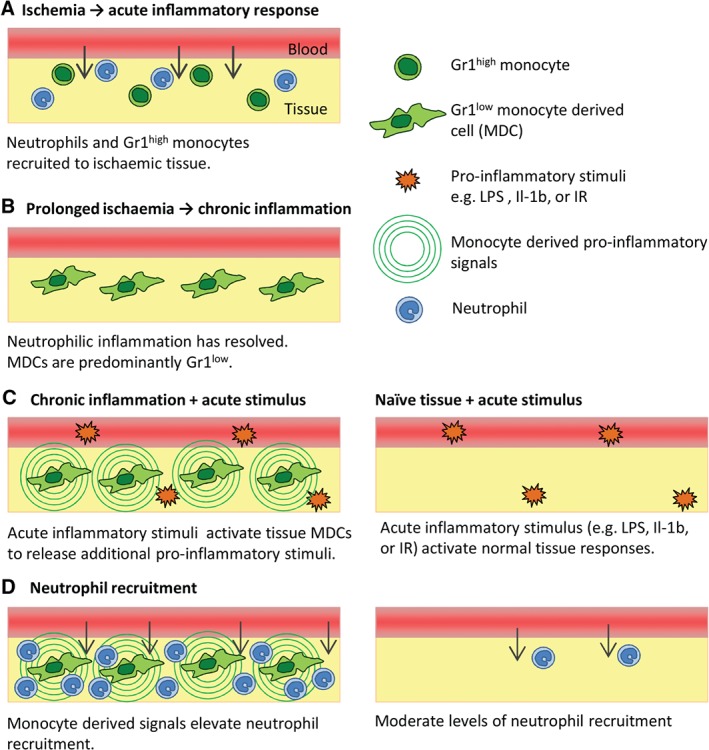Figure 6.

Schematic illustration of the interaction of acute and chronic inflammatory responses. (A) Induction of chronic partial ischaemia induces rapid recruitment of neutrophils and Gr1high monocytes from the circulation. (B) Seven days after the induction of ischaemia, the neutrophilic inflammation has resolved, but an elevated population of Gr1low MDCs persist in the tissue. (C) These Gr1low MDCs are highly sensitive to a range of pharmacological or physiological stimuli (e.g. LPS or IR), and respond by generating a range of additional proinflammatory stimuli. (D) These secondary signals act on the endothelium to upregulate ICAM‐1 expression, which supports luminal neutrophil adhesion, and/or directly activate neutrophil chemotaxis. Naive tissues exposed to the same exogenous stimuli lack this additional source of secondary mediators, resulting in lower overall tissue activation.
